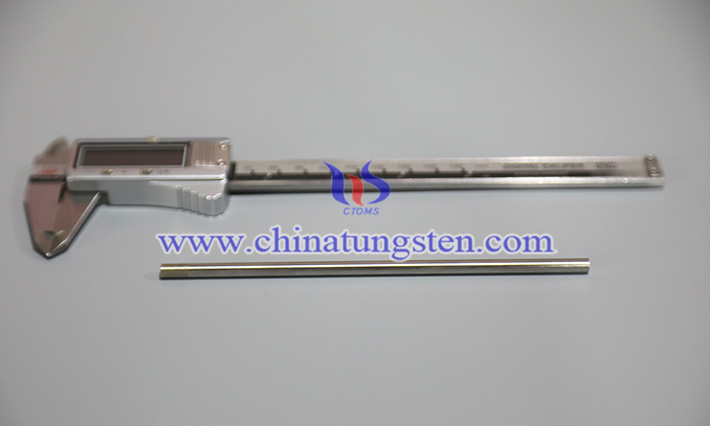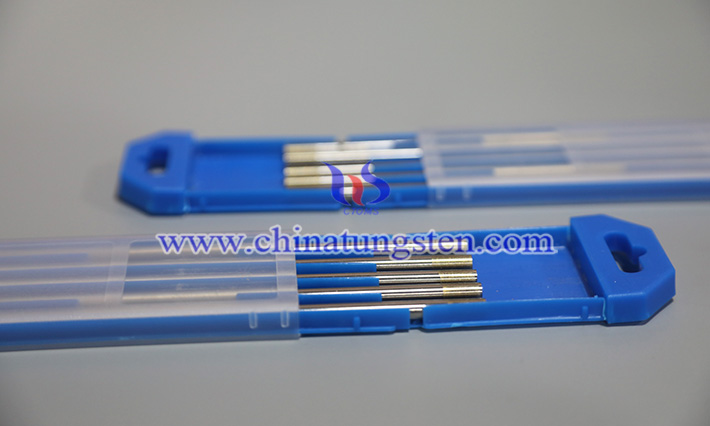How Long Is the Service Life of Lanthanum Tungsten Electrode?
- Details
- Category: Tungsten Information
- Published on Wednesday, 30 July 2025 16:28
In welding, electrodes are the core material for establishing the arc, conducting energy, and forming the weld pool.
With increasing environmental protection requirements and the prevalence of welding automation, traditional thorium-containing electrodes are gradually being replaced by non-radioactive alternatives, with lanthanum-tungsten electrodes being the most widely used and recognized. Beyond environmental and performance advantages, service life is also a key concern for users. So, how long can a lanthanum tungsten electrode last? And what factors influence its service life?
1. Material properties determine foundation life
This type of electrode is made from high-purity tungsten doped with a certain percentage of lanthanum oxide (La₂O₃), typically 1.0%, 1.5%, or 2.0%. The addition of lanthanum oxide not only enhances electron emission performance but also significantly improves the electrode's thermal stability and ablation resistance. Compared to pure tungsten, this doped alloy is less susceptible to melting, collapse, or tip blunting at high temperatures, extending its life by over 30% to 60% under the same welding conditions.

2. How to measure service life
In the welding industry, electrode life is usually not calculated by "time", but by the following indicators:
Total welding length: how many meters of weld can one electrode support;
Arcing times: how many times the arc can be struck without performance degradation;
Tip maintenance frequency: the interval between re-sharpening;
Electrode loss rate: the amount of mass reduction per unit time or unit current.
In industrial applications, the WL20 electrode (containing 2.0% lanthanum oxide) can weld stainless steel at currents between 120A and 200A, typically supporting welds exceeding 3,050 meters with a single electrode, without the need for frequent replacement or polishing. In automated welding systems, it can maintain stability even after tens of thousands of arc starts, significantly extending its lifespan beyond that of traditional tungsten materials.
3. Key factors affecting lifespan
Although the material itself has excellent durability, its actual service life is still affected by many external factors:
Current intensity and stability: Too high or frequently fluctuating current will aggravate burning;
Electrode grinding quality: Proper grinding of the tip (such as 60° cone angle, smooth and crack-free) can reduce arc jitter and extend life;
Shielding gas purity and flow rate: High-purity argon provides good protection and can significantly slow down oxidation and ablation;
Welding method: DC negative connection (DCEN) is gentler on the electrode than AC or positive connection;
Workpiece material: Metals with high thermal conductivity, such as aluminum, have a large thermal shock to the electrode, which relatively shortens the service life.

4. Comparison with other types of electrode life
Under the same working conditions, the life of lanthanum tungsten electrodes is generally better than the following categories:
Pure tungsten: most susceptible to ablation and shortest lifespan;
Thorium tungsten: Although it has a decent lifespan, it has radioactivity issues;
lanthanum- doped products under DC conditions.
Therefore, in most DC welding occasions, especially batch welding, automated welding, and high-precision welding, lanthanum- doped materials have become an ideal choice for improving work efficiency, reducing replacement times, and lowering welding costs.
- Chinatungsten Online: www.chinatungsten.com
- CTIA GROUP LTD: en.ctia.group
- Tungsten News & Price: www.ctia.com.cn
- Molybdenum News & Price: news.molybdenum.com.cn
- Tel.: 86 592 5129696; Email: sales@chinatungsten.com



 sales@chinatungsten.com
sales@chinatungsten.com